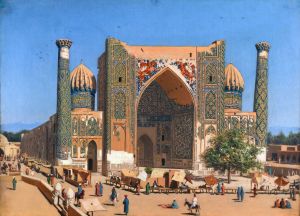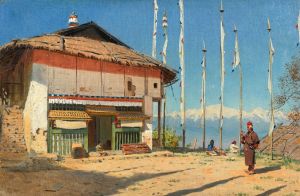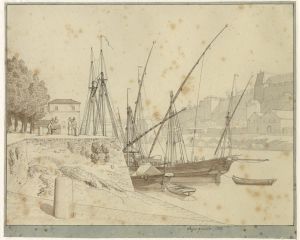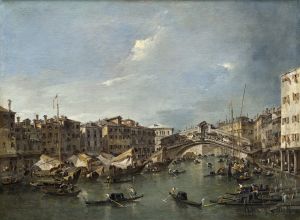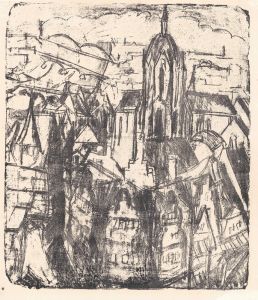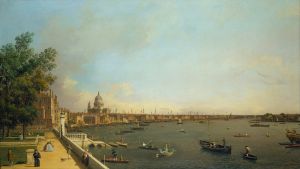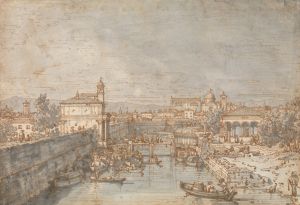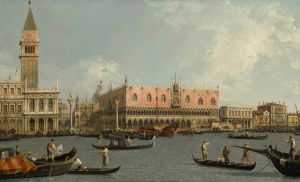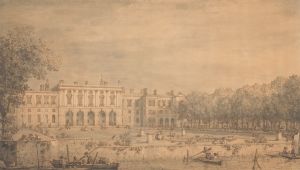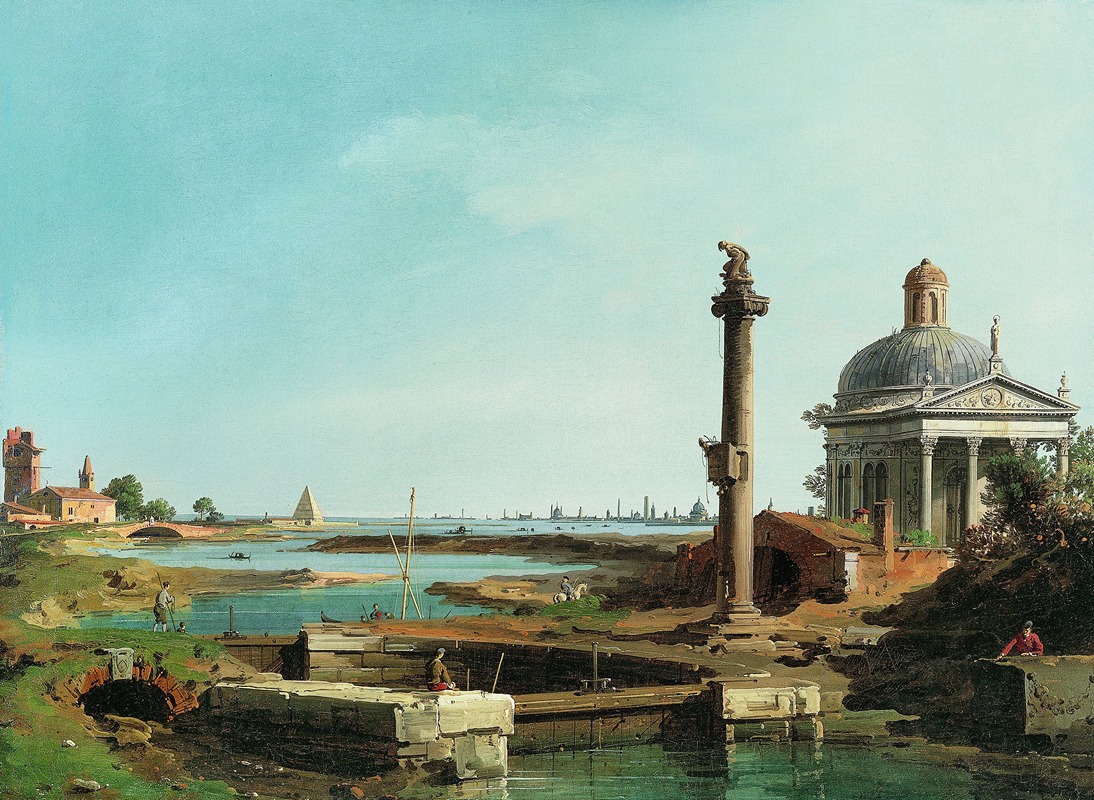
A Lock, a Column, and a Church beside a Lagoon
A hand-painted replica of Canaletto’s masterpiece A Lock, a Column, and a Church beside a Lagoon, meticulously crafted by professional artists to capture the true essence of the original. Each piece is created with museum-quality canvas and rare mineral pigments, carefully painted by experienced artists with delicate brushstrokes and rich, layered colors to perfectly recreate the texture of the original artwork. Unlike machine-printed reproductions, this hand-painted version brings the painting to life, infused with the artist’s emotions and skill in every stroke. Whether for personal collection or home decoration, it instantly elevates the artistic atmosphere of any space.
"A Lock, a Column, and a Church beside a Lagoon" is a painting by the renowned Italian artist Giovanni Antonio Canal, better known as Canaletto. Canaletto was born in Venice in 1697 and became famous for his detailed and precise landscapes, particularly those depicting the city of Venice. His works are celebrated for their meticulous attention to architectural detail and the play of light and shadow.
This particular painting, "A Lock, a Column, and a Church beside a Lagoon," is an excellent example of Canaletto's skill in capturing the essence of Venetian scenery. The painting features a tranquil lagoon scene, with a lock, a prominent column, and a church situated beside the water. The composition is carefully balanced, with the architectural elements harmoniously integrated into the natural landscape.
The lock in the painting is a significant feature, representing the engineering marvels of the time and the importance of water management in Venice. Locks were essential for controlling water levels and facilitating navigation in the city's intricate canal system. The column, another focal point of the painting, adds a vertical element that contrasts with the horizontal expanse of the lagoon. Such columns were often erected to commemorate significant events or figures and were common in Venetian public spaces.
The church depicted in the painting is a typical example of Venetian ecclesiastical architecture, with its distinctive dome and ornate façade. Churches were central to community life in Venice, serving not only as places of worship but also as landmarks and symbols of the city's rich cultural and religious heritage.
Canaletto's use of light in this painting is particularly noteworthy. The way he captures the reflections on the water and the interplay of light and shadow on the buildings creates a sense of depth and realism. This technique, combined with his precise brushwork, gives the viewer a vivid impression of the scene.
The painting also reflects Canaletto's ability to convey the serene and timeless quality of Venice. Despite the presence of human-made structures, the scene exudes a sense of calm and harmony with nature. This quality is one of the reasons Canaletto's works have remained popular and influential over the centuries.
Canaletto's paintings were highly sought after by collectors, particularly in England, where his works were admired for their detailed and picturesque views of Venice. His ability to capture the city's unique atmosphere and architecture made his paintings valuable souvenirs for wealthy travelers on the Grand Tour.
"A Lock, a Column, and a Church beside a Lagoon" is a testament to Canaletto's mastery of landscape painting and his deep connection to Venice. The painting not only showcases his technical skill but also his ability to evoke the beauty and tranquility of the Venetian landscape. Today, Canaletto's works are held in high regard and can be found in major art collections and museums around the world, continuing to inspire and captivate audiences with their timeless charm.





